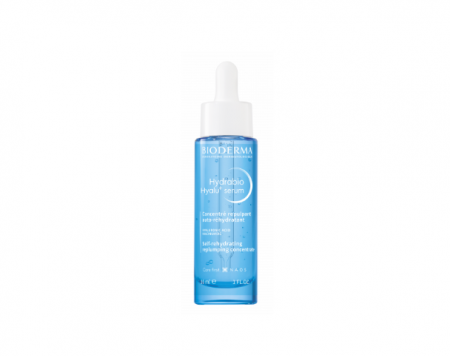Hyaluronic acid has multiple benefits for skin: it contributes in particular to keeping skin plumped and deeply hydrated, so that it stays smooth and firm.
. Like a sponge that holds 1,000 times its weight in water!
Hyaluronic acid plays an essential role in regulating skin’s hydration. It holds water and reduces water loss.
. A natural filler that replumps skin
Acting like cement, hyaluronic acid fills in the empty spaces between tissues. It naturally fills out volumes, and therefore reduces the appearance of wrinkles. This is the main reason it’s used in aesthetic medicine. Thanks to hyaluronic acidHA, skin can stay is smooth and soft. Intensely hydrated, it is supple and bursts with health.
Hyaluronic Acid: True or False?
. Hyaluronic acid is also appreciated because it’s well- tolerated by the skin.
True: Bad reactions are extremely rare. Using a hyaluronic acid serum is, therefore, perfectly safe, with and the risk of intolerance beingis very low.
. Hyaluronic acid can be taken as a dietary supplement
True; however, t but… There is no peer reviewed scientific evidence today that this active ingredient is readily bioavailable and can extend its benefits towards reach the skin.
. Hyaluronic acid can be used along with other active ingredients
True: Hyaluronic acid provides complementary hydration if you use acids (BHA and AHA), retinol or anti-acne treatments that dry skin out. Hyaluronic acid serums and vitamin C or collagen are some of the best also combinations that are frequently recommended.
. Hyaluronic acid is used only for skin
False: It has calming and anti-inflammatory properties that are used in a variety of medical applications: sore throat, eye surgery and hydration, cartilage protection…



